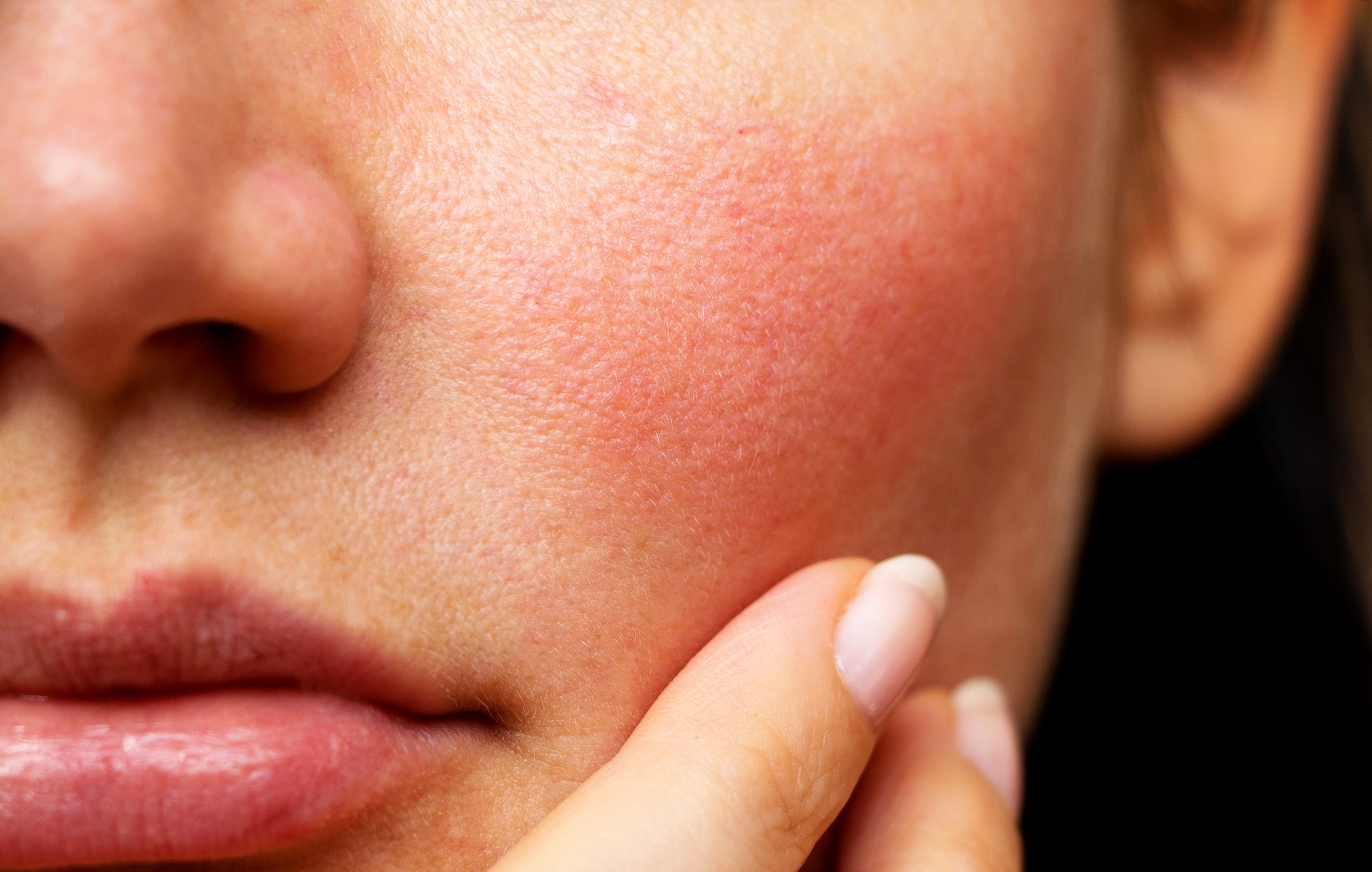Managing sensitive skin
Up to 40% of people describing themselves as having sensitive skin and many more reporting an adverse response to a personal care product at some stage. From a dermatologist perspective, the term “sensitive” refers to those with skin that reacts or is intolerant to the use of some or many cosmetics. Sensitive skin can occur in all skin types however, it is more commonly found in women than men and often those with delicate or dry skin and a tendency to flushing. As well as reacting to cosmetics, sensitive skin can also react to environmental factors such as cold or hot temperatures and wind or sun exposure.
While there is no sign of inflammation, sensitive skin is commonly associated with burning, itching, stinging, dryness and redness or feelings of tightness. These reactions can be intermittent or permanent and vary in intensity. Where inflammation is present (welts, hives, raised red skin or lasting redness) it is important to consider an existing underlying skin condition such as dermatitis, rosacea or a contact allergy in which case cosmetic ingredients need to be assessed. Usually a challenge using the suspected product will pinpoint the cause. In the case of a skin disorder, managing the condition is a priority as well as removing suspected cosmetics.
Sensitive skin
Sensitive skin tends to be drier, more likely to react to cosmetics and environmental factors such as sun, wind and temperature changes.
Understanding the causes of sensitive skin
1. Reduced barrier function – if the barrier of lipids (acid mantle) is compromised the skin is less protected against chemicals, irritants and microorganisms and there is chance of greater Trans Epidermal Water Loss (TEWL), increasing the likelihood of dehydration. Skin that is dry, dehydrated or injured has less nerve end protection which continues the cycle of sensitivity reactions. Once this cycle is in place many cosmetic ingredients can cause irritation. See list below.
Avoiding products such as cleansers and shampoos that contain sodium laurel sulphate and like foaming agents is also crucial as they will aggravate skin dryness and further reduce barrier function. In one clinical trial, participants with reduced barrier function avoided all foaming agents (surfactants) and minimised preservative use. After 8 weeks their skin returned to normal barrier function.
2. Skin Trauma – skin traumas, such as sunburn and skin treatments like chemical peels and abrasion can cause ongoing sensitivity. Strong acids such as those found in glycolic acid peels have been known to cause lasting skin sensitivity issues. If the skin barrier function can be repaired, then sensitivity may be reduced however it is likely that cosmetic ingredients with a stronger acid pH will have to be avoided or used with caution. These can include further glycolic acid treatments, lactic and malic acid, vitamin C serums with concentrations over 10%, alpha and beta hydroxy acids.
3. Environmental factors – extremes of cold, heat (including heaters in winter), air conditioning, alcohol & spicy foods can be triggers and should be monitored and avoided if relevant.
4. Stress increases the likelihood of heightened neuro-sensory reaction in the skin. In situations such as this wind, touch and cosmetic brushes can cause irritation or redness. Managing stress can be quite individual and often required internal nervous system support as well as de-stressing practices such as yoga, breathing exercises or meditation.
5. Allergies – true skin allergies arise from immune system dysfunction. These include eczema, hives, rosacea and contact dermatitis. Patch testing can help confirm these conditions to establish if these conditions are contributing to sensitive skin reactions.
Sensitive Skin Tips
avoid artificial fragrances and products that contain high concentrations of essential oils or natural fragrances
avoid the most common irritant in your skin and hair care as listed above
avoid “acids” such as glycolic, lactic and malic acid products without the advice of a specialist
avoid products that contain artificial dyes
Use non-soap cleansers for at least 2 months. Soapwort based products and cream cleansers are ideal to give the skin a break.
Use tepid water to wash your face and avoid hard scrubs and they may increase irritation.
Introduce one new skin care product at a time and use for at least 3 days to evaluate how your skin reacts. Ideally ask for a tester before you buy. When you find something that works, continue to use it.
Hypoallergenic and “unscented” products are often recommend as a solution to sensitive skin however, just because you can’t smell the scent doesn’t mean that fragrances weren’t added or that fragrance-like substances weren’t used. Often subtle fragrances are used to cover up the scent of the base ingredients, so you don’t smell anything you would identify as a scent but it is still there and is likely to cause irritation regardless.
Other common skin irritants include:
Balsam of Peru – perfume and skin lotion
Formaldehyde – a preservative found in nail polish
Quaternium 15 – a preservative in shampoo
Sodium lauryl sulphate (SLS) – a detergent found in shampoo, toothpaste, body wash and bubble bath
Propylene glycol – found in cosmetic products
Methyl, propyl, butyl, and ethyl parabens – used as preservatives, they are found in many cosmetic products
DEA (diethanolamine) and MEA (monoethanolamine) – foaming agents in products that “bubble”
Artificial Colours – FD&C and D&C are used in make up
Phthalates – found in plastic containers and some cosmetics


